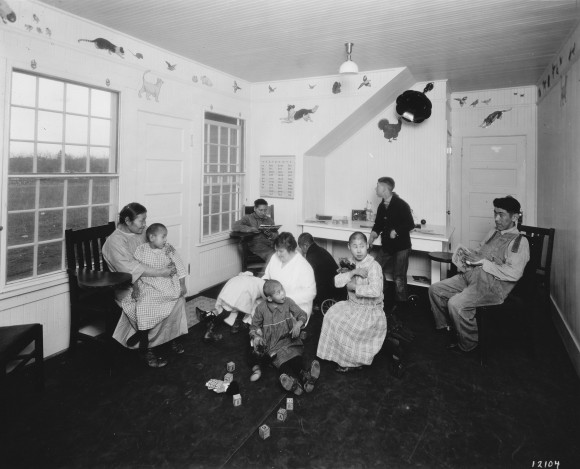Lina Olafsson lives in Stockholm, Sweden, and recently discovered that her grandfather was sent to Morningside Hospital when he was a young man. She kindly provided the following story and photos.
By Lina Olofsson
My mother died last year, leaving a box with an old diary, some pictures and old letters from my grandfather.

Gus Berglund, seated on the right
My grandfather, Gus Berglund, was born in 1881. He lived in the little mining town – Malmberget – in the north of Sweden, just about 100 kilometers north of the Arctic Circle. He came from a large family, with three sisters and six brothers. His father and the older brothers worked as iron-ore miners.
At the age of 27, my grandfather Gus immigrated to Canada with one of his younger brothers – Conrad – and four of their friends. They arrived to Quebec on the Empress of Ireland on May 1, 1909. Their brother Erik had emigrated some years before, and was living in Spokane, Washington with his young wife and a son. Their sister Elin emigrated some months after my grandfather, and she settled in Vancouver, Canada with her husband and four children.

1917 Letter to Morningside Hospital
From 1910 to 1914, the two brothers, Gus and Erik Berglund, worked together in different railway camps in the Spokane-Seattle-Vancouver-area. Sometimes together – sometimes apart.
My grandfather kept a diary during the first years in Canada and United States, where he wrote some short notes about the different jobs. But the last note is dated 1914, and there are no letters after that time saved between the siblings in Canada and their family in Sweden.
But I found a [Download not found] from February 1917, written by a brother in Sweden to Doctor J. W. Luckey at Morningside Hospital, asking about my grandfather Gus. He had heard that Gus had been admitted at Morningside, but the family was worried and could not get in contact with him at the hospital.

Gus Berglund, standing left
The patient records I found from Morningside state that my grandfather Gus Berglund was admitted from Knik on May 8, 1916. His diagnosis was, “Catatonia, Silent, uncommunicative, Morose”. About a year later , on June 7, 1917, he was discharged to Seattle where his brother Conrad was living with his family.
Gus probably went Alaska, to build the Alaskan railway, which was constructed at that time in the area of Knik. He probably lived in the Wasilla railway camp with his brother Eric when he was taken ill. Or maybe he went to Alaska for the gold? I probably never will find out what happened to my grandfather Gus in Alaska.
After First World War grandfather Gus returned to Sweden. From 1923 to 1932 he was building railways in the north of Sweden.
 Brother and uncle, Lawrence Joseph Ross, 91, died Sunday, July 22, 2012, at Denali Center where he had lived for the past 39 years.
Brother and uncle, Lawrence Joseph Ross, 91, died Sunday, July 22, 2012, at Denali Center where he had lived for the past 39 years.











